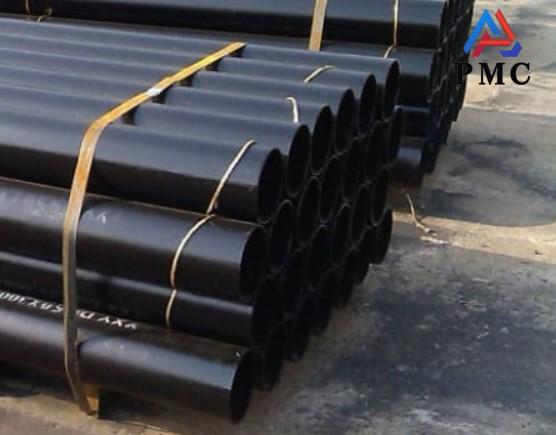
Seamless Pipe Material for Structure
Structural seamless pipes are mainly used to manufacture engineering structures and mechanical parts. They have specific requirements for the strength, toughness, weldability and processing performance of the steel pipes. The choice of material depends on the specific application scenario, the type of load to be borne, the environmental conditions and the required mechanical properties. The following is a careful summary of the common materials of seamless pipes for structural use, mainly classified according to the standards of different countries or regions:
Chinese National Standard (GB/T)
China's national standard GB/T 8162 is the main standard for "Seamless Steel Tubes for Structural Use", covering a variety of carbon structural steels and low-alloy high-strength structural steels.
Carbon structural steel
10#: Low carbon content, good plasticity and toughness, moderate strength, suitable for general mechanical parts and light-load structural parts.
20#: One of the most commonly used carbon structural steel grades, it has a moderate carbon content, good plasticity and toughness, is easy to process and weld, and is widely used in the manufacture of various mechanical parts, pipe fittings, structural frames, etc., such as automobile drive shafts, bearing sleeves, etc.
35#: The carbon content is higher than 20#, the strength and hardness are improved, but the plasticity and toughness are slightly reduced. It is suitable for mechanical parts and structural parts that have certain requirements on strength but do not require very high toughness.
45#: Typical medium carbon steel with high strength and hardness. It can obtain higher strength and wear resistance after quenching. It is often used as important mechanical parts such as shafts, gears, and bolts. In structural applications, its welding performance needs to be considered, and preheating and post-weld heat treatment are usually required.
Low alloy high strength structural steel
Q345 (old brand 16Mn): One of the most commonly used low-alloy high-strength structural steel grades, it has high strength, good plasticity and toughness, as well as excellent welding performance and low-temperature resistance. It is widely used in various important structures and mechanical parts such as bridges, buildings, vehicles, engineering machinery, and pressure vessels. Q345 is divided into different quality grades such as Q345A, Q345B, Q345C, Q345D, and Q345E according to the impact energy requirements and deoxidation methods. Among them, grades B and C are the most common.
Q390, Q420, Q460, Q620: These are higher strength grades of low alloy high strength structural steels, which have higher yield strength and tensile strength and are suitable for structures that require lightweight and high load-bearing capacity, such as large lifting equipment, high-rise building steel structures, etc.
42CrMo, 35CrMo: These are alloy structural steels with high strength and toughness. They are usually used after heat treatment (quenching and tempering). They are mainly used to manufacture heavy-load, high-speed mechanical parts and structural components that require higher fatigue strength and wear resistance, such as crankshafts, gears, connecting rods, and high-pressure pipelines.

American Standards (ASTM)
In North America, seamless steel pipes for mechanical and structural purposes are primarily manufactured to ASTM standards.
ASTM A519: Seamless carbon and alloy steel pipe for mechanical purposes
This standard covers a variety of carbon steel and alloy steel grades suitable for applications where machining is required or where specific mechanical properties are required.
Commonly used carbon steel grades include: 1008, 1010, 1018, 1020, 1026, 1045, etc. The selection of these grades depends on the required strength, hardness and processing performance. For example, 1018 and 1020 are common general-purpose mechanical structure steels.
Commonly used alloy steel grades: 4130, 4140, etc. These are chromium-molybdenum steels with higher strength and toughness, and are generally used for more demanding mechanical parts.
ASTM A53 / ASME SA-53
Although primarily used for fluid transport, Grade B (Gr.B) is also commonly used for general structural purposes, especially when structural parts also need to take into account certain fluid transport functions.
European Standards (EN)
The European standards EN 10210 (hot-finished structural hollow sections) and EN 10216 (seamless steel tubes for pressure purposes) also include materials suitable for structural applications.
EN 10210: Hot-worked structural hollow sections of non-alloy and fine grain steels
S235JRH, S275J0H, S275J2H, S355J0H, S355J2H, S355K2H: These grades are widely used in buildings, bridges, engineering machinery and other structures. The letter "S" stands for structural steel, "JR", "J0", "J2", "K2" represent different impact energy requirements, and "H" stands for hollow profiles.
EN 10216-3: Seamless steel tubes for pressure purposes - Technical delivery conditions - Part 3: Alloy fine grain steel tubes
Although designed for pressure-bearing purposes, some of these high-strength fine-grain steel grades, such as P275NL1, P355N, P355NH, P355NL1, P460N, etc., may also be selected in certain high-strength structural applications due to their excellent mechanical properties and toughness.
Japanese Standards (JIS)
Japanese standard JIS G3444 is the standard for "Carbon steel pipes for general structural use", covering seamless and welded steel pipes. STK290, STK400, STK490, STK500, STK540: These grades are commonly used for structural steel pipes. The number indicates the minimum tensile strength (in N/mm²). STK400 and STK490 are common choices and are used in civil engineering, construction and mechanical structures.
Conclusion
When selecting the material for seamless steel pipes for structures, the most important thing is to make comprehensive considerations based on design requirements, load conditions, ambient temperature, whether welding is required, and cost-effectiveness, and ensure that the selected material meets the corresponding national or industry standards. For example, in general structures, Q235 or 20# steel may be sufficient; in high-strength, heavy-load or low-temperature environments, Q345, alloy steel or higher-grade steel needs to be selected.
Read more: Seamless Steel Pipe for Construction


